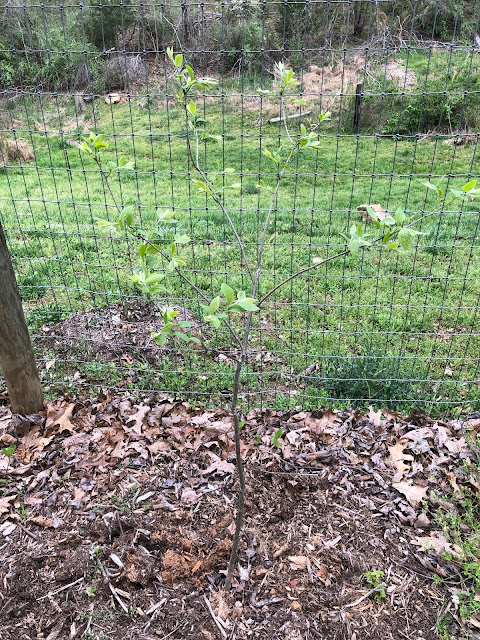The columbine is like shooting stars.
May apple larger view.
The golden Alexanders are easily doubled in size from their feature post and blooming like mad.
My mulch should be delivered soon and I can clean up the beds, but things are going wild right now. Debbie Roos, our native pollinator garden guru at the county extension office, advised in the classes I’ve taken to try and plant things that will bloom in all three of our main growing seasons here in central NC.
I tried hard to make sure I did this when selecting the plants for these two beds, and while my judgment about size/height of plant and spacing wasn’t always on the mark (hence my need to move many tall goldenrod), I did nail the constant bloom thing.
Once the early spring bloom begins in these beds it is nonstop until at least November, and even on into winter there are many seed pods for birds to forage.
Debbie taught a garden design class last year that I took well after I’d planted these first two beds, and I learned a lot about how to go about designing the aspects of the garden I’d not quite nailed the first time around.
She gave us large sheets of white paper and had about a hundred different colors of post-it notes, and after viewing slides of many, many native NC pollinator plants, we did a quick garden design on our paper. I have mine saved to do the next big native plant bed, which will be across the walkway from the front bed you can see above. It’s a huge space, and Debbie suggested starting in one section and planting out from there. I’ll probably start it this fall, since my experience has been that everything I plant in the fall season does super well with much less attention.
A project to look forward to!















